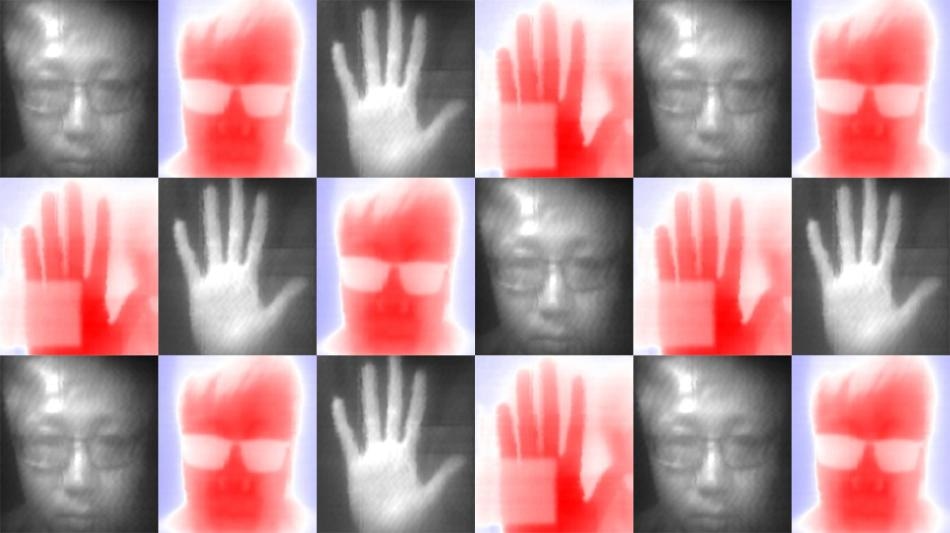Mar 8 2019
Human eyes miss a whole world out there, concealed in the ranges of light wavelengths that naked eyes cannot see. But infrared cameras can capture the secret light produced as cool stars burn, plants photosynthesize, and batteries get hot. They can see through plastic, and smoke and fog.
 Photos taken by researchers testing a new method to make an infrared camera that could be much less expensive to manufacture. (Photo courtesy of Xin Tang)
Photos taken by researchers testing a new method to make an infrared camera that could be much less expensive to manufacture. (Photo courtesy of Xin Tang)
But infrared cameras are a lot more pricy than visible-light ones; the energy of infrared light is smaller than visible light, making it more difficult to trap. A new innovation by researchers with the University of Chicago, however, may soon result in much more economical infrared cameras—which in turn could allow infrared cameras for common consumer electronics such as phones, as well as sensors to assist autonomous cars to see their environs more accurately.
“Traditional methods to make infrared cameras are very expensive, both in materials and time, but this method is much faster and offers excellent performance,” said postdoctoral researcher Xin Tang, the first author on a study which was published on February 25th in Nature Photonics.
“That’s why we’re so excited about the potential commercial impact,” said co-author Philippe Guyot-Sionnest, a professor of physics and chemistry.
Present-day infrared cameras are produced by consecutively laying down several layers of semiconductors—a complicated and error-prone method that makes them very expensive to be incorporated into the majority of consumer electronics.
Guyot-Sionnest’s lab instead chose quantum dots—minute nanoparticles measuring only a few nanometers in size. (One nanometer is how much a fingernail grows per second.) At that scale they have unusual properties that vary depending on their size, which researchers can manipulate by tweaking the particle to the appropriate size. Here, quantum dots can be tweaked to capture wavelengths of infrared light.
This “tenability” is crucial for cameras, as they need to capture various parts of the infrared spectrum.
Collecting multiple wavelengths within the infrared gives you more spectral information—it’s like adding color to black-and-white TV. Short-wave gives you textural and chemical composition information; mid-wave gives you temperature.
Xin Tang, Study First Author and Postdoctoral Researcher, University of Chicago.
They modified the quantum dots so that they had a formula to sense short-wave infrared and one for mid-wave infrared. Then they deposited both together on top of a silicon wafer. The resulting camera works very well and is a lot easier to build.
It’s a very simple process. You take a beaker, inject a solution, inject a second solution, wait five to 10 minutes, and you have a new solution that can be easily fabricated into a functional device.
Xin Tang, Study First Author and Postdoctoral Researcher, University of Chicago.
There are a number of promising uses for low-cost infrared cameras, the researchers said, including autonomous vehicles, which depend on sensors to scan the road and surroundings. Infrared can sense heat signatures from living beings and see through haze or fog, so automobile engineers would be pleased to incorporate them, but the cost is excessive.
They would be useful for researchers, too. “If I wanted to buy an infrared detector for my laboratory today, it would cost me $25,000 or more,” Guyot-Sionnest said. “But they would be very useful in many disciplines. For example, proteins give off signals in infrared, which a biologist would love to easily track.”
The paper’s other authors include graduate students Matthew Ackerman and Menglu Chen. Matthew Ackerman came up with the idea of the device along with Tang and formulated the doping strategy for the fabrication of the diodes. The researchers used the Pritzker Nanofabrication Facility at the Institute for Molecular Engineering. The research was funded by the Army Research Office and the National Science Foundation.